






News
The documentary "GEOBIAMA: A Scientific Expedition in the Amazon" is released at SESC São José dos Campos. The GEOBIAMA - Geology and Biodiversity Amazon and PATES - Research Group release this Thursday, August 13th, the documentary "GEOBIAMA: A Scientific Expedition in Amazonia", at 19 pm in the Auditorium of SESC in São José dos Campos. The documentary is the result of a research in development by the geologist Dilce de Fátima Rossetti, researcher at the National Institute for Space Research (INPE) and the botanist Hanna Tuomisto from the University of Turku (UTU / Finland). The documentary was recently produced along with researchers from INPE and specialists from remote sensing, geology, paleontology and botany in Brazil and abroad, focusing mainly on the investigation of the geological past of Amazonia as key to understanding the current distribution of the greatest biodiversity on Earth. The results collected from various areas surveyed confirmed that changes in the Amazonian geography, flora and fauna were not caused only by climate fluctuations but by environmental changes, many of them caused by earthquakes. According to these studies, earthquakes have also contributed to change of course of major rivers, such as Madeira, Negro and Branco Rivers and of their tributaries.
SERVICE
Official documentary release
"GEOBIAMA: A Scientific Expedition in the Amazon"
Date: August 13, 2015 - 19 p.m.
Location: Auditorium of the SESC, São José dos Campos
Avenida Dr. Adhemar de Barros, 999 - San Dimas Garden
São José dos Campos - SP
Phone: 12 3904-2000
Free admission: Tickets will be available at the box office of SESC one hour prior to the event
Most recent publications - Project GEOBIAMA
Most recent publications - Projeto ETECS-Paraíba



Research Group
Landscapes in Time and Space (PATES)
Research Group
Landscapes in Time and Space (PATES)


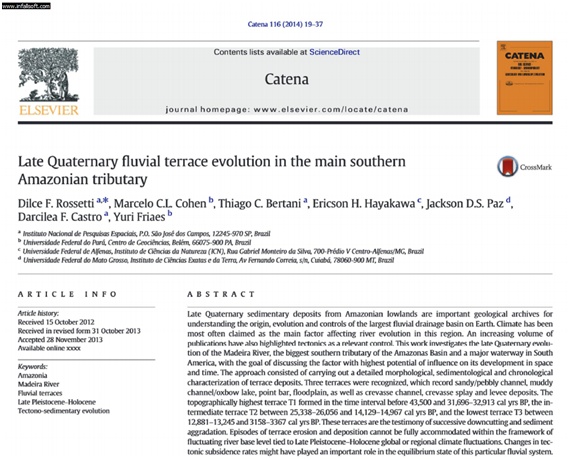
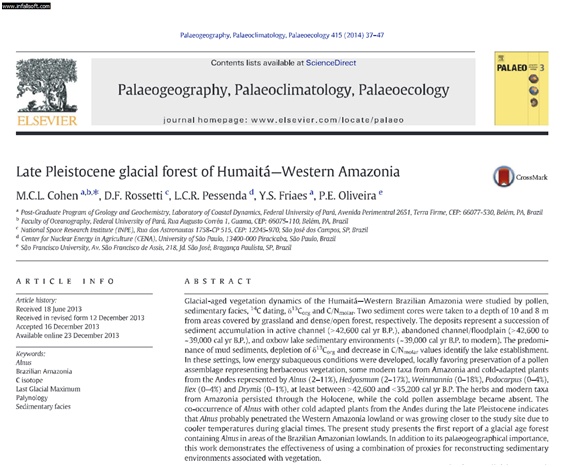
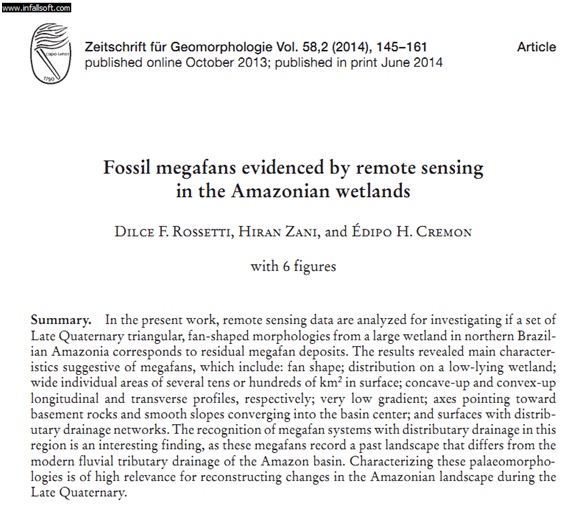
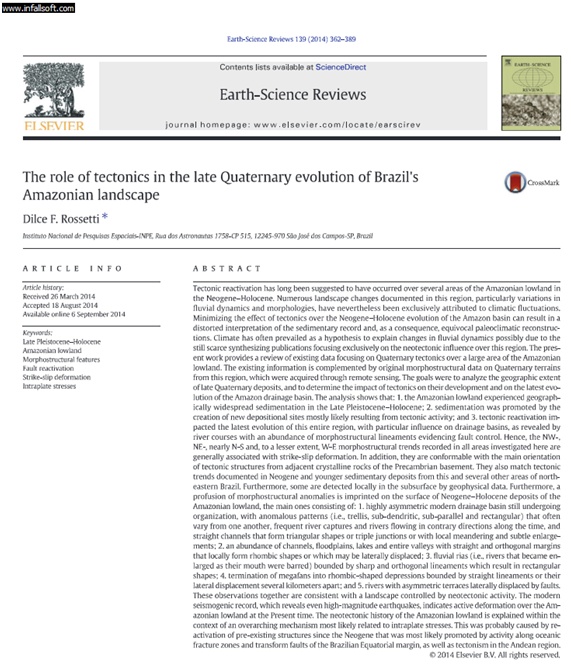
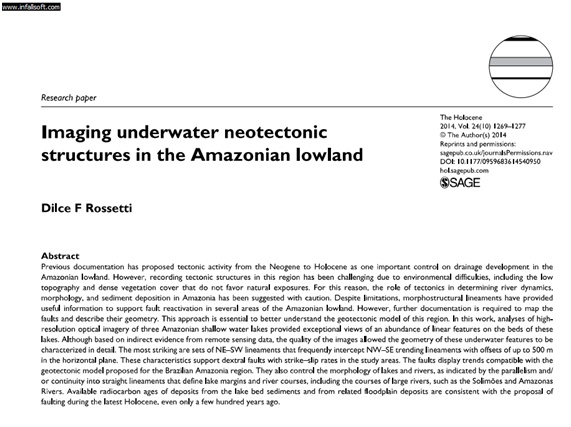
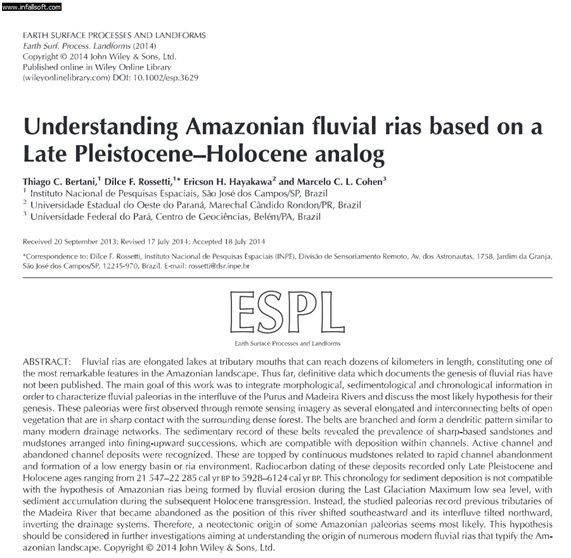
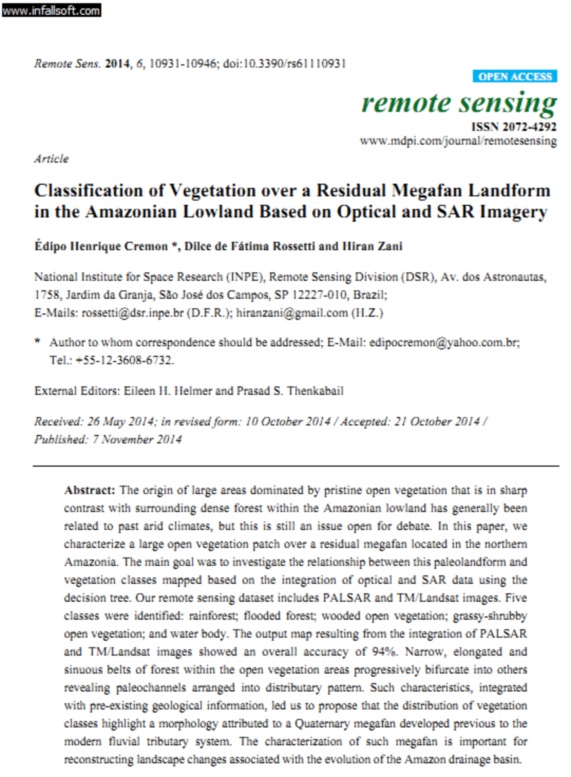
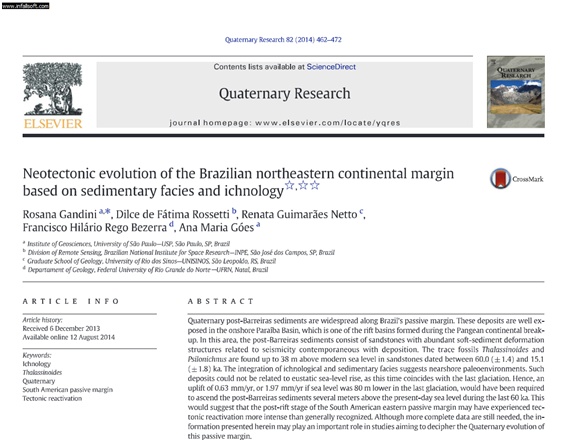
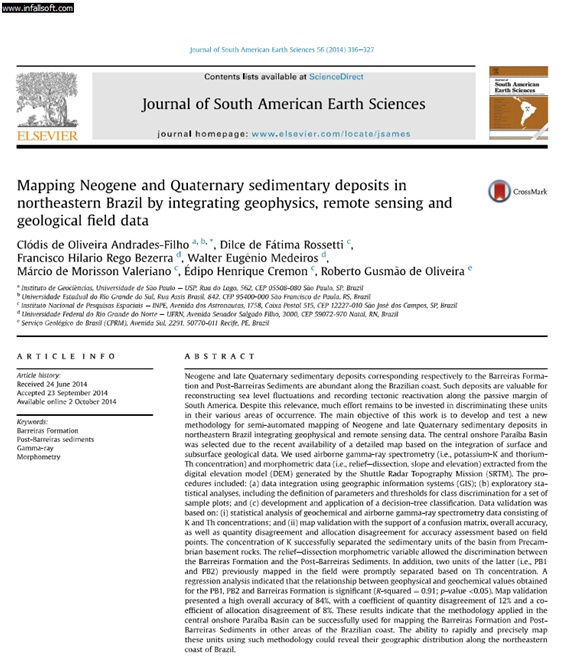
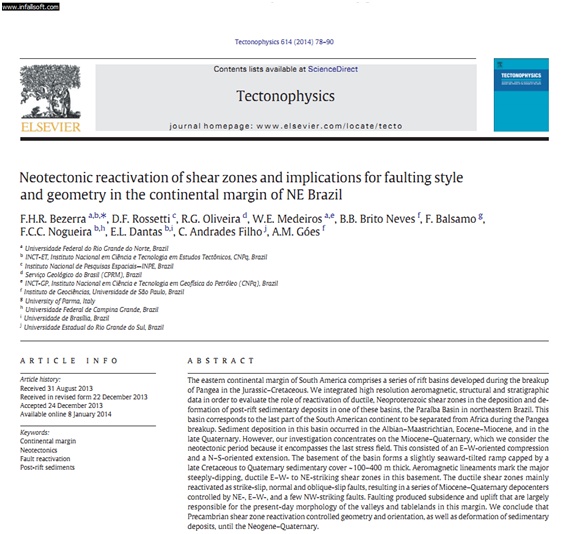











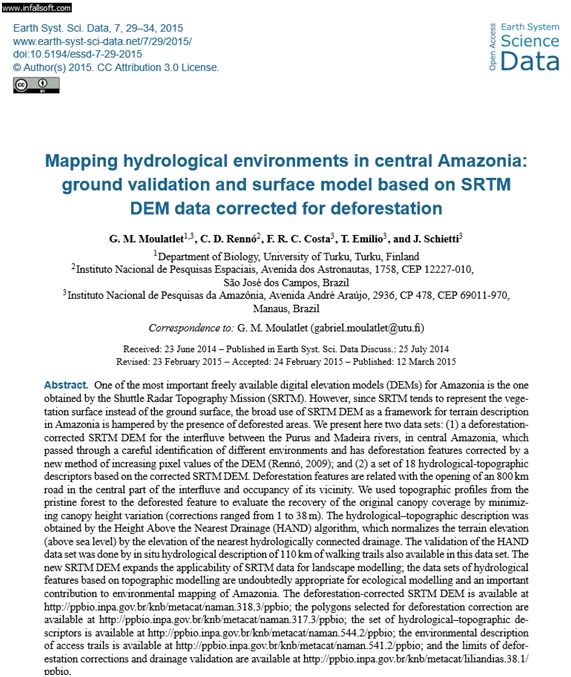


The first seminar of the GEOBIAMA Project was held at INPE between May 18th and 22nd. This seminar, under the coordination of Dilce Rossetti (INPE/Brazil) and Hanna Tuomisto (UTU/Finland), had the participation of the majority of Brazilian and Finnish researchers and graduate students involved in the research. During this opportunity, participants presented methodological essays to be used during the research as well as preliminary results already obtained in this early stage of development of this project. Intense discussions contributed to better establish the strategy for integrating remote sensing with geological and botanical data aiming at modeling the Amazon biodiversity at different scales. The seminar served also to better establish tactics to be adopted in future field campaigns in both pilot areas under investigation in the south and north of the Amazon lowlands.
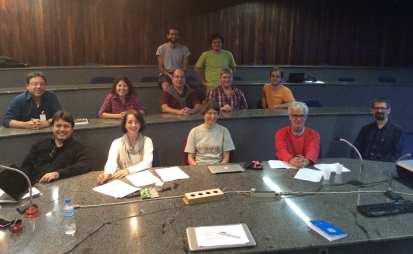
The Doctoral student Gabriel Massaine Moulatlet, under supervision of Dr. Hanna Tuomisto at the University of Turku and Dr. Camilo Rennó at INPE, is visiting the INPE. His visit aims the development and validation of hydrological models developed by Dr. Camilo Rennó. The area chosen for modeling is the Middle Juruá, in the eastern part of the Brazilian Amazonia. In 2012, in partnership with other researchers from the University of Turku (FIN), Aarhus (DIN) and INPA, Gabriel and Hanna joined an expedition of three months through the Jurua to document the floristic composition of the region. The collected data involved several groups of plants such as ferns and lycophytes, palm trees and specimens of Zingiberales and Melastomataceae families. These data are being used for validation of hydrological models and the results will be used to compose one of the chapters of Gabriel's doctoral thesis. The visit will last from January to April 2015.

Field expedition held in February 2015 in the Viruá National Park in Roraima, northern Amazonia, which had the goal of collecting geological and botanical data. This expedition had the participation of Dr. Dilce of Fatima Rossetti (INPE), Dr. Roger Gribel (Botanical Garden of Rio de Janeiro) and the botanical technician Paulo Assunção. Together, this team undertook data collection in order to reconstruct vegetation successions consisting of various types of campinaranas and understainding their association with residual morphologies representative of various subenvironments of the Viruá megafan depositional system. This corresponds to a huge sand accumulation through a distributary drainage network developed uring the late Pleistocene to Holocene, which was derived from Precambrian basement rocks of the Guiana Shield. This field campaign was of great relevance to the GEOBIAMA project, because it allowed access to remote areas of the megafan paleomorphology searched in the State of Roraima. Such access did not occurred since the last major drought of 2010, repeating now, i.e., five years later, under the El Niño influence.
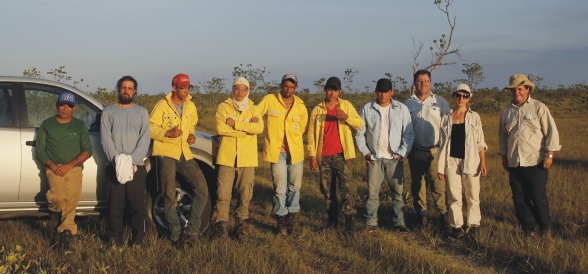
The last field expedition made in the Paraíba Basin in September 2014 had the participation of Dilce F. Rossetti and her master student Fabio Alves from INPE, along with the researchers Vinicius Santos and Ernande C. Santos from the Institute of Astronomy, Geophysics and Atmospheric Sciences (IAG-USP), Lena Simone B. Silva from the Federal University of Roraima (UFRR), Ana Maria Góes from the Institute of Geosciences of the São Paulo State University (USP) and Jean Lima of the Federal University of Rio Grande do Norte (UFRN). In this field campaign, a geophysical survey using vertical electrical sounding (VES) was undertaken along the Paraíba River valley in order to investigate the continuity of morphostructural lineaments with geological faults in the subsurface. It is expected that the analysis of the sections resulting from this survey will help other geological studies currently being carried out in this basin, which have suggested tectonic activity in very recent geological times, even in the Holocene, in this region of the country. It is postulated that these tectonic movements are connected with reactivations resulting from recent changes in the South American plate, which remains to be better recorded, and which are possibly related to the numerous historical earthquakes that have been documented in the northeastern Brazilian margin.
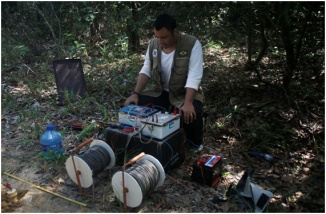
From October to November 2014, the staff from the GEOBIAMA Project (FAPESP/AKA) went to a scientific expedition aiming geological research in the area between Porto Velho (Rondônia) and Humaitá (southern Amazonas). This campaign had the participation of the researcher Dilce F. Rossetti and the doctoral students Édipo Henrique Cremon and Thiago Castilho Bertani from INPE. In addition, this field research also had the participation of Prof. Marcelo Cancela Lisboa Cohen, palynologist and Coordinator of the Graduate School Program in Geology and Geochemistry at the Federal University of Pará (UFPA), as well as one of his master student Walmir de Jesus Lima Junior. The geographer Fabiana B. Gomes, president of the Center for Studies Rio TERRA and doctoral student of the Graduate Program in Geography at the Federal University of Paraná was also there. The purpose of the field campaign was mainly collect sedimentological data and samples for pollen analysis as well as for 14C and optically stimulated luminescence dating. During the stay of the team in the field, 70 meters of drill cores were collected, together with 450 samples for carbon and nitrogen isotopic analyses and 50 samples for dating. With these data, this research group expects to advance in their studies aiming paleoenvironmental reconstructions of Quaternary deposits from the southeastern Brazilian Amazonas, and better establish the different vegetation patterns that characterized this region through this geological time.
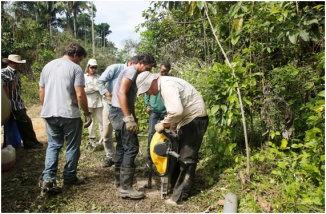

The doctoral student Édipo Henrique Cremon, under the supervision of Dilce F. Rossetti in the Graduate School Program in Remote Sensing at INPE, received the award Young Geomorphologist of the year 2014 Professor Hilgard O'Reilly Sternberg from the Brazilian Geomorphology Union. The nomination ceremony took place during the opening ceremony of the 10th National Geomorphology Symposium, held in Manaus between 18th and 22th of October 2014. Our congratulations to Édipo!
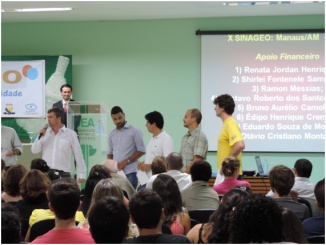
The doctoral student Carlos Leandro Oliveira Cordeiro, under the supervision of Dr. Dilce F. Rossetti at the Graduate School Program in Remote Sensing, INPE, is currently in a study abroad at the University of Turku. His trip is part of the bilateral exchange program with the Finish research group within the scope of the Project GEOBIAMA (FAPESP/AKA). Carlos will remain at that university under the supervision of Dr. Hanna Tuomisto, the lider of that research group, until February 2015, in order to complete his studies focusing vegetation distribution patterns in Amazônia and their relation to geomorphological and geological processes associated with development of the Viruá megafan in Roraima.
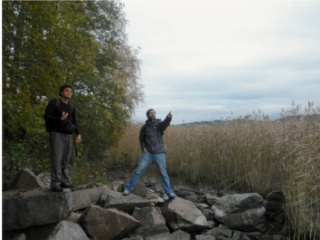
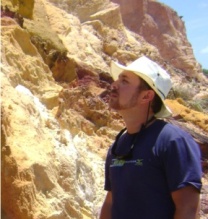
The student Clódis de Oliveira Andrades Filho has successfully completed his doctoral program in the Institute of Geosciences at the São Paulo State University (USP) under the supervision of Dilce F. Rossetti. His thesis defense took place in November 17th, 2014, and is entitled "Tectono?sedimentary evolution of the central onshore Paraíba Basin, northeastern Brazil". This thesis represents an important contribution to the Project ETECS-Paraíba, supported by FAPESP.

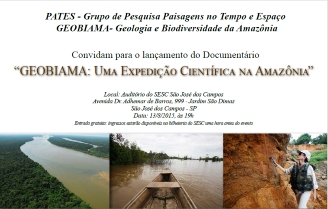
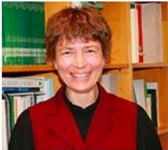
O NÚCLEO DE ESTUDOS EM BIODIVERSIDADE TROPICAL CONVIDA PARA AS PALESTRAS
Amazonian floristic patterns as reflections of geological history.
Drª Hanna TuomistoDepartment of BiologyUniversity of Turku (Finlândia).
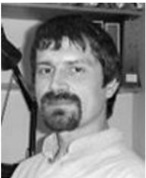
O NÚCLEO DE ESTUDOS EM BIODIVERSIDADE TROPICAL CONVIDA PARA AS PALESTRAS
Floristic variation and animal distributions in Amazonia
Dr. Kalle RuokolainenDepartment of BiologyUniversity of Turku (Finlândia)






